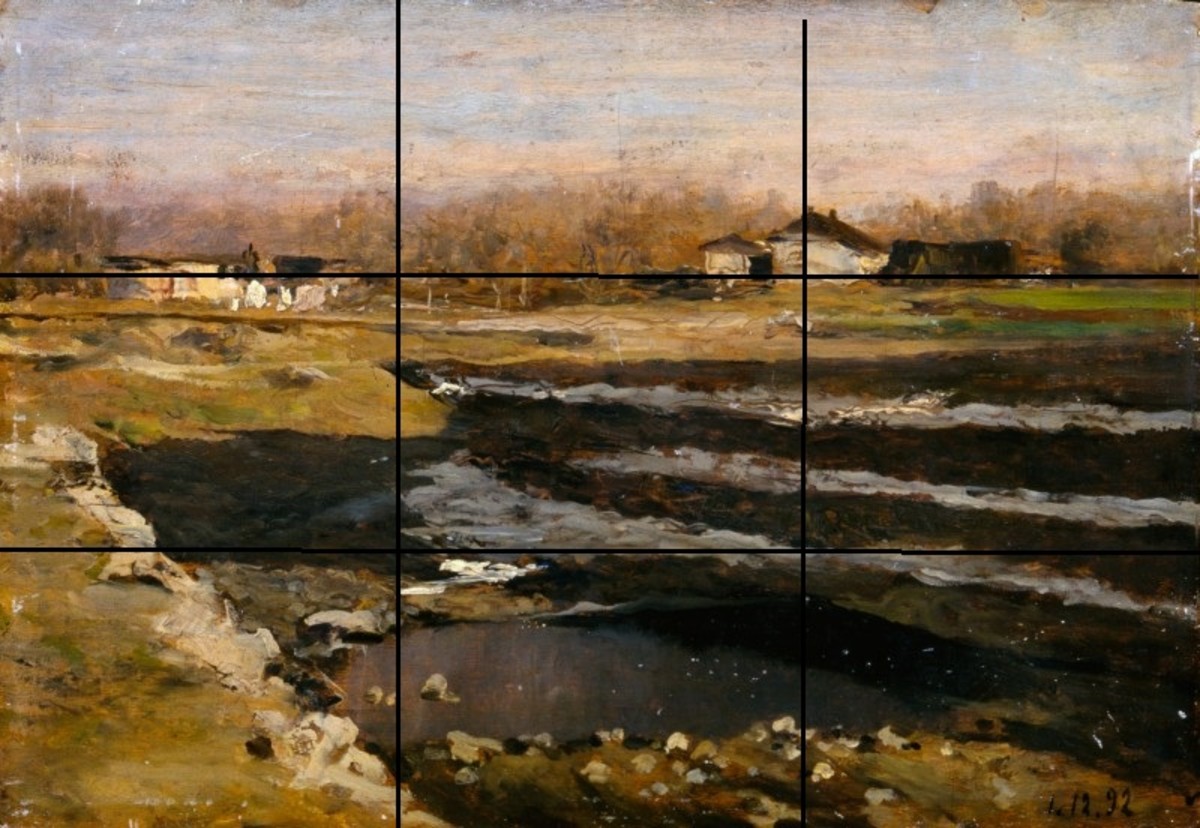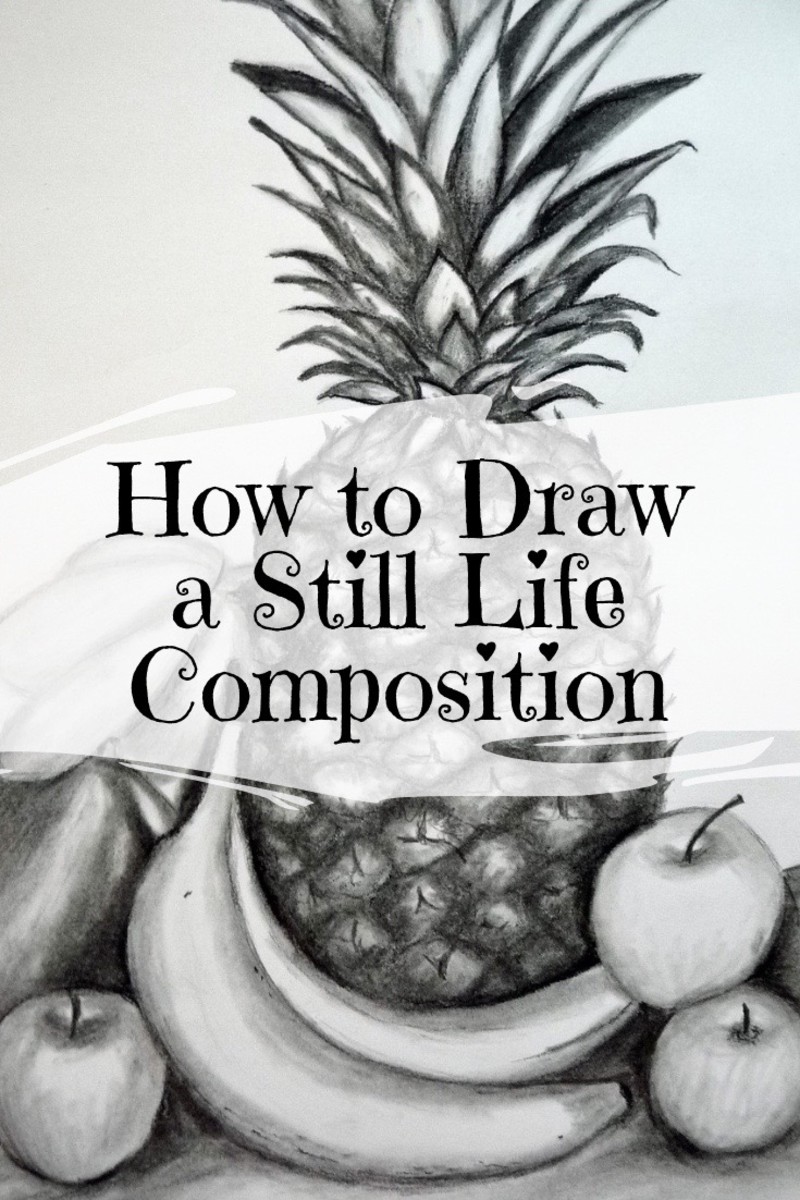- HubPages»
- Arts and Design»
- Drawing»
- Drawing Tutorials
Visual Composition in a Nutshell
Composition for Drawing, Painting and Photography
You really want to take into consideration some basic principles of composition to take your visual expression to the next level. By practicing good composition, eventually it will become a habit and you'll do it instinctively without wasting any time or energy. Isn't that cool?
As most skills, it may take more time at first, but you'll get much faster with practice. If you have the rest of your visual skills polished, composition will be very easy to learn and you'll quickly feel confident to use these principles in your work. Let's start.
The Rule of Thirds in Composition
A widely used principle, most often used in photography composition is the rule of thirds. The picture is divided in three equal sections both vertically and horizontally. The lines that are separating the sections can be used as guidelines. For example, in landscape photography it is good practice to have the horizon match one of the guidelines.

How it’s Used
Imagine or draw on your canvas a 3x3 grid, where the divisions are equally spaced from each other and the edges of the canvas.
Take a look, and study the characteristic examples shown below.
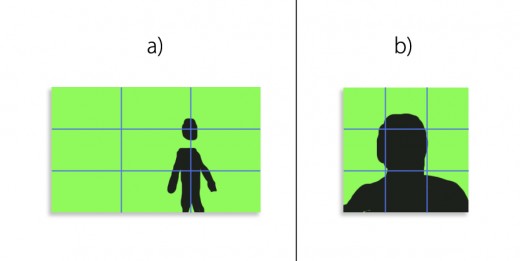
The rule of thirds works best on rectangular canvases, where the height and width of the image are different from each other. In such cases, like in the example (a) you can use the vertical lines or the intersection points to determine a good subject placement in the frame. The intersection points are even more accurate, and should give you the approximate position of the most interesting, or important element of the picture, sometimes referred to as the “focal point”.
A square canvas, as in example (b) is somewhat an exception and often central positioning may work best, making use of the already present symmetry and balance.
Common Use-Cases for the Rule of Thirds
- Placement of horizon for landscapes
- Placement of a person or a portrait
- Using one of the intersections for a special point of interest
The Holy Grail of Composition - The Golden Ratio
For anyone at least semi enthusiast about visual arts, the introduction to “The Golden Ratio” is mandatory. Why, because it has been so heavily used by designers and architects throughout the centuries, and it even has some firm foundations in Mathematics. Anyway, it’s a very curious topic that deserves at least some basic introduction.
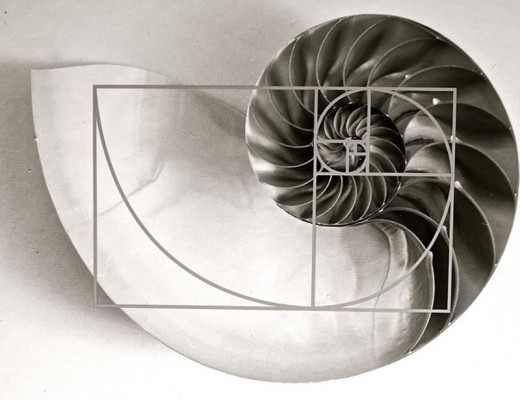
Historical Background
The Golden Ratio, or proportion is based on the Fibonacci sequence. It’s a mathematical sequence, based on a simple rule which roughly goes something like “every next number in the sequence is equal to the sum of the previous two numbers that appeared in the sequence”.
It looks like this
0,1,1,2,3,5,8,13,21,34…
The curious thing is that the proportion between any two consequence numbers is always the same, and it’s roughly 1.618 … it’s really an amazing concept, and many people in history have been deeply intrigued by the pattern. Some even say it’s the blueprint of God. Leonardo Da Vinci was especially interested, and studied this ratio and the nature of proportions. It’s very interesting that so many patterns, including the metrics of the human body, flower, fractals and almost anything in nature, has some sort of “Golden Ratio” proportion that can be observed. If you are interested in this kind of mysterious, Dan Brown kind of stuff, I encourage you to watch this video and do more research on this concept, but for the most part, in this article we’ll continue to discuss and learn some practical ways that you can use this knowledge to improve your composition skills.
The golden rule has been used in architecture by the Ancient Greeks to design the Parthenon and by Tweeter, to design the layout.
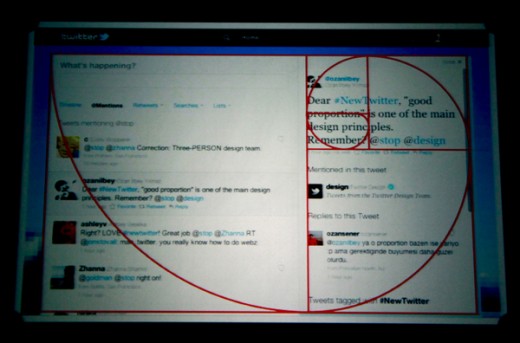
Cropping Images according to the Golden Ratio
If you choose the height and width of your canvas according to the Fibonacci sequence, you are already making use of the ratio. For example a 3x5 ratio is a canvas size that is making use of the golden ratio. Whatever the size, if you longer side divided by the shorter side of the canvas approximates about 1.6 - you’ve got it. If you check many commercial products and canvas sizes, and you will be surprised that many of them are actually respecting this rule.
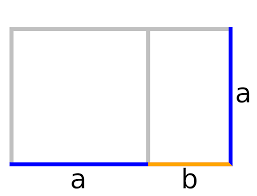
Placement of Points of Interest Using the Golden Ratio
Inside the picture itself, the golden ratio can be applied again and again, sectioning the canvas in ever smaller bits that are always according to the Fibonacci sequence. If applied in a very regular order, it forms a theoretically endless spiral.
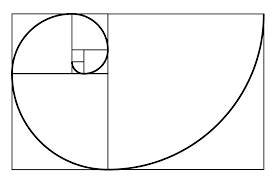
Proportions that Match the Golden Ratio
There are some rulers, computer graphic templates and even some of the visual editing software can aid you in quickly determining the size or position of a new object in your composition. Also, after more extensive use of the ratio, you will start to develop an intuitive sense for distance and placement, that will roughly match the ration, and that’s totally fine in many cases.

Other Visual Aspects Where You Can Apply the Golden Ratio, and “Advanced” Stuff
Proportions are not only limited to length and position. Any metric with a value can be base for applying the golden ratio. Although this may be considered as somewhat advanced and often a complicated thing to do. Most people restrict the use of the golden ratio to cases where they need to determine a position or length of some element in the picture.
The ratio can be applied to the tonal values for example, if you know your scale of values this is not so hard to do. Another use is to develop better reference for color choices.
In film making the ratio has been reportedly used to determine key points for the plot.


